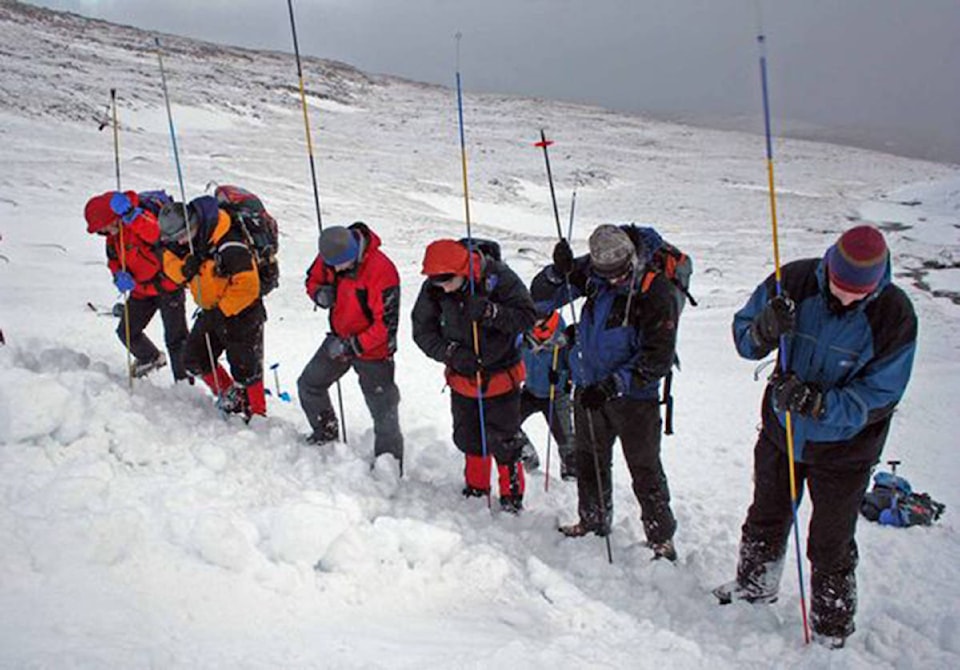The East Kootenay region has experienced recent substantial snowfall and cold temperatures. Snowfall has tapered out to light flurries and temperatures are climbing. The increased temperature may lead to greater risk of avalanches in the Purcell Mountains.
As of Tuesday, January 2, the danger ratings for the Purcell region, to which Cranbrook and Kimberley belong, is a two, or moderate rating for the below treeline, and treeline level, and is at a rating of three, or considerable, in the highest alpine range. The danger rating system goes from one to five, one being low, five being extreme.
“We’re certainly concerned that there’s a little bit of a fundamentally dangerous situation in the snowpack,” said James Floyer, forecasting program supervisor with Avalanche Canada. “We do have a weak layer buried, and that’s buried around about 50, 60, 70 centimetres below the surface depending on whether you’re in a sort of higher snow area or a lower snow area and the concern is that the warmer temperatures are going to essentially settle the snow into a denser slab on top of that weak layer.”
That would make for a higher likelihood of human-triggered avalanches, caused by skiers, snowboarders or snowmobilers.
“We’re not considering the situation is really a natural avalanche cycle, we’re not expecting a lot of natural avalanche activity, but we are concerned that humans could trigger avalanches certainly through the weekend period and just because of the structure of the snowpack that we have right now.”
Floyer advised that the kinds of terrain where someone would be most likely to trigger an avalanche, and therefore the type of terrain that should likely be avoided for the time being, is steeper, more sheltered areas. The second greatest concern is exposed areas where the wind has affected the snow.
“So you’ve got those two things going on,” said Floyer, “in the sheltered areas we’re more concerned with that weak layer, and then in exposed areas we’re more concerned with that wind slab that’s developing on the surface. So pretty general advice would be to say it’s not really the best time to go out really hunting for the steepest lines right now.”
Floyer explained that Avalanche Canada firmly believes that it is always possible to go out into the back country, but their mantra is to match the terrain that one chooses to go out in with the conditions. You can assess the conditions easily by visiting their website www.avalanche.ca.
He also stressed the importance of having the resources to keep you safe, should you decide to go out in situations like we have now, with a considerable or orange avalanche rating; which means dangerous avalanche conditions, natural avalanches possible, human-triggered likely with small avalanches in many areas, large avalanches in specific areas, or very large avalanches in isolated areas.
“As we come into this weekend if we do get warming and that slab starts to settle it’s possible we might see those considerable danger ratings coming down to the tree line elevation, maybe even below tree line so it’s possible that we’ll see more of that triangle started to be painted orange.”
The most valuable resource someone can equip themselves with is attained through taking an avalanche course, and then taking that knowledge into the back country along with the essential tools: a shovel, a probe and a transceiver.
“Those are what we call the avalanche essentials and those are the devices that help you potentially recover another member of your team if you do get caught in an avalanche.”
On December 31, 2017 two skiers triggered a size 1.5 avalanche in the Goldie Lake area near Panorama. One skier was buried completely and the second was able to dig him out and 911 was called from another nearby party. No injuries were sustained in the accident, and it goes to show that having proper avalanche gear and training, as these two skiers did, is absolutely vital when in the backcountry.
College of the Rockies offers Avalanche Skills Training available at their Kimberley, Fernie and Creston campuses through until March.
paul.rodgers@cranbrooktownsman.com
